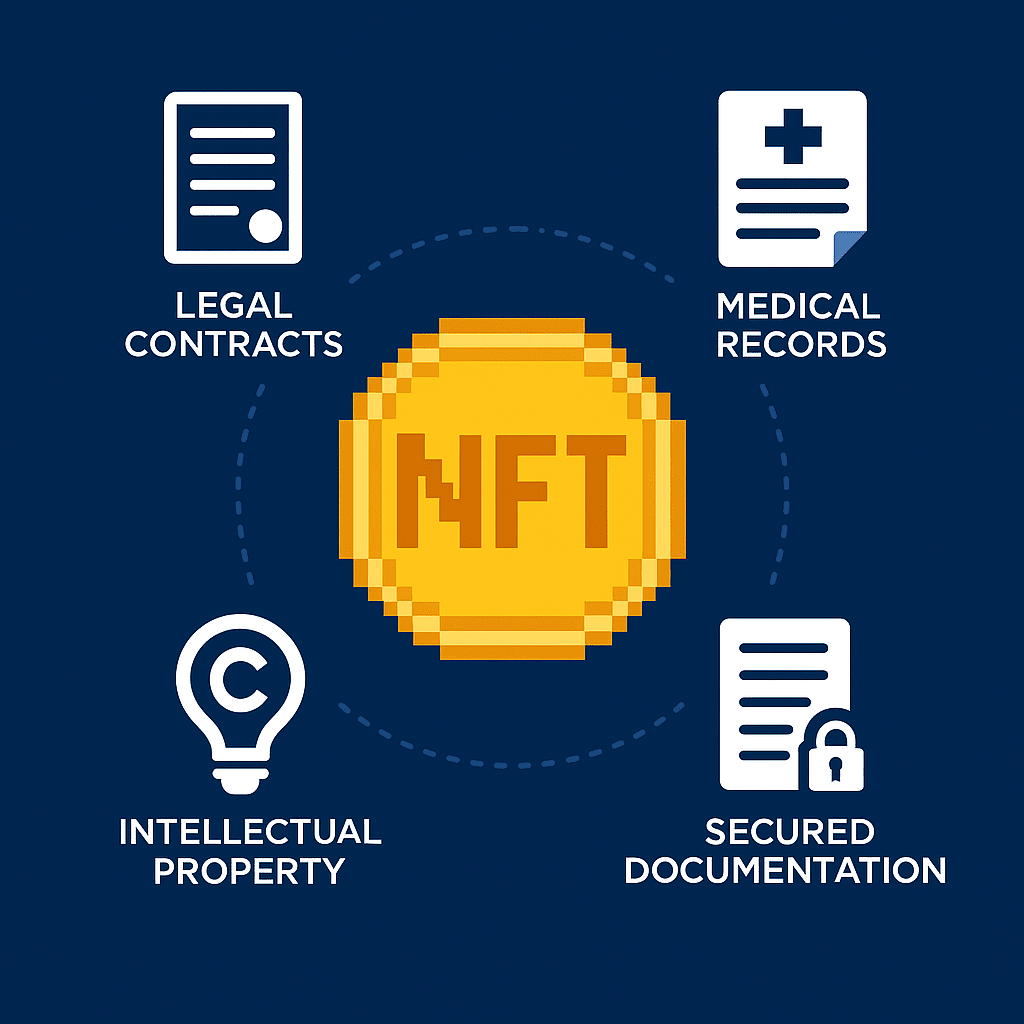💭 Non-fungible digital assets (Non-Fungible Tokens or NFTs) have gained widespread interest in recent years, especially in the fields of digital art and virtual collectibles. While these uses are the most common, NFT technology holds significant potential that extends beyond art and collectibles, entering into practical and scientific fields that contribute to the development of many vital industries. This article reviews the most innovative and practical uses of NFTs in legal contracts, medical documentation, and intellectual property, along with the platforms and cryptocurrencies supporting these uses.
💡 The concept of non-fungible digital assets (NFTs)
✔️ An NFT is a unique digital token that cannot be exchanged or replicated, stored on a blockchain network, ensuring its authenticity, transparency, and resistance to counterfeiting. This uniqueness makes NFTs an ideal tool for documenting ownership of digital or even physical assets in a secure and verifiable manner.
1. Smart legal contracts
✔️ One of the most impactful uses of NFT technology is smart legal contracts. Using blockchain, smart contracts linked to digital or physical assets can be created, ensuring the terms of the contract are executed automatically upon meeting certain conditions without the need for intermediaries.
✔️ For example, a lease agreement or property sale agreement can be represented by an NFT that includes the contract terms, and upon meeting the payment or delivery conditions, the process is executed automatically, reducing the need for paperwork and lowering the chances of manipulation or legal disputes.
2. Medical documentation and health files
✔️ In the healthcare sector, trust and confidentiality are priorities when dealing with medical data. NFTs can be used to securely and transparently document patients' medical records, where the patient retains digital ownership of their health record and can share information only with authorized parties.
✔️ This approach allows for improving the quality of medical services by providing accurate and updated data, while also facilitating the monitoring of the pharmaceutical supply chain and ensuring the authenticity of medications through NFTs linked to each pharmaceutical package.
3. Intellectual property and copyright protection
✔️ Intellectual property rights face significant challenges in the digital age due to the ease of unauthorized copying and distribution. NFTs provide an innovative solution to protect the rights of authors and creators by registering artistic, literary, or scientific works with non-fungible tokens.
✔️ By linking the artwork or intellectual product to an NFT, ownership can be tracked, authenticity verified, and usage or distribution rights clearly defined, enhancing the protection of creators' rights and providing them with a sustainable source of income.
👈 The platforms and cryptocurrencies supporting practical NFT applications
✔️ These practical applications require a strong and reliable technological environment to store and execute smart contracts related to NFTs, highlighting the importance of blockchain platforms and the supporting cryptocurrencies. Among the most notable of these platforms:
✅ Ethereum (ETH): The leader in smart contracts, it allows for easy creation and transfer of NFTs, being the most widely used platform in legal, medical, and artistic projects.
✅ Polygon (MATIC): A layer solution built on Ethereum that reduces transaction costs and increases speed, ideal for applications requiring fast and economical execution such as medical documentation.
✅ Solana (SOL): Offers high processing speeds and low costs, making it suitable for medical documentation and intellectual property protection applications that require intensive transactions.
✅ Tezos (XTZ): Known for its energy efficiency and upgradability, it is used in projects focused on sustainability and protecting creators' rights.
✅ Cardano (ADA): Focuses on security and scalability, specifically targeting applications in legal contracts and healthcare.
